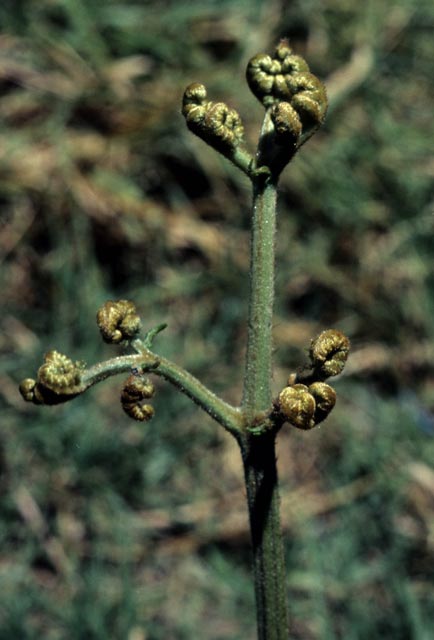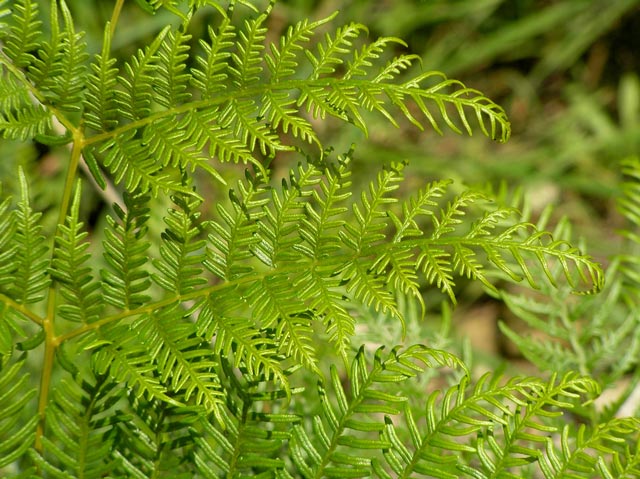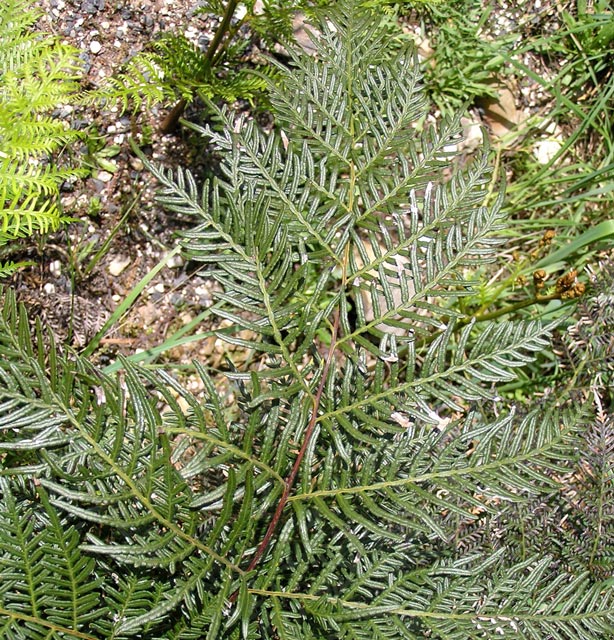

Reproduction
Bracken ferns, like all ferns, reproduce using alternation of generations. Before understanding the way ferns reproduce one must know some of the terms:
Diploid: "a cell containing two sets of chromosomes, inheriting one from each parent." An example of this would be a cell in the human body. Often times a (2n) denotes when something is diploid.
Gamete: "A haploid reproductive cell, such as sperm or egg. Gametes unite during sexual reproduction to produce a diploid zygote."
Gametophyte: "In organisms that have alternation of generations, the multicellular haploid form that produces the gametes by mitosis. The haploid gametes unite and develop into sporophytes." In ferns the gametophyte is heart shaped and gives rise to gametes (n).
Haploid:"a cell containing only one set of chromosomes." An example of this would be human sex cells; sperm and egg. Often times an (n) denotes that something is haploid.
Sporophyte: "In organisms that have an alternation of generations, the multicellular diploid form that results from the union of gametes. The sporophyte produces haploid spores by meiosis that develop into gametes."
Zygote: "The diploid product of the union of haploid gametes during fertilization."
These are the five steps of reproducing for a Bracken fern :
1. Haploid gametes are produced by the gametophyte by the process of mitosis.
2. This gamete and the gamete of another fern come together to form a diploid zygote. This is called fertilization.
3. The diploid zygote grows into a multicellular sporophyte through mitosis.
4. The adult sporophyte gives rise to haploid spores through meiosis.
5. The spores grow into multicellular haploid gametophytes.
All ferns, including Bracken ferns, need water to fertilize. Due to this adaptation if a Bracken fern lives in a habitat where seasons occur they emerge in the spring and die off in the autumn. The spores are usually dispersed in late summer or early autumn. Spores can be carried by the wind to new destinations where the spore will wait to be germinated.
The leafy part of the fern is called a frond. The small leaf-like structures that make up the frond are pinnae. Small clumps are patches are on the underside of the frond and this is where the spores are located. If a frond has spores on its underside than it is called a "fertile frond."
When Bracken ferns first emerge from the ground they have structures called, "fiddleheads." Some people eat these. These "fiddleheads" unfurl themselves and grow into fronds. A young Bracken fern will light green and soft. The older they get the darker green they become and the harder their pinnae get.
Home Next: Interactions
